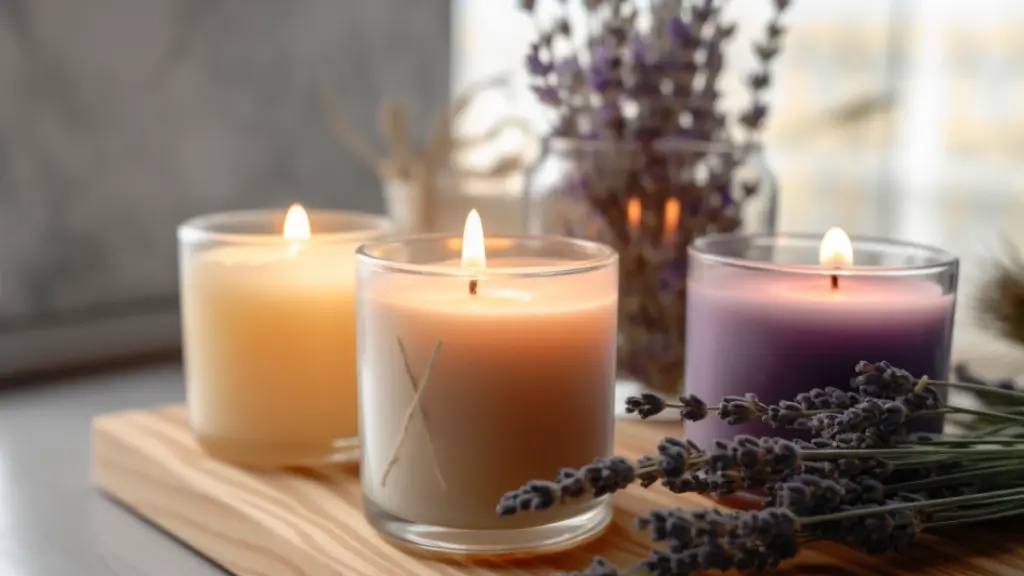Scented candles have become a staple in many households, offering a warm, inviting atmosphere and filling the air with pleasant fragrances. Whether it’s to create a relaxing environment or add a touch of luxury to a room, the appeal of scented candles is undeniable.
However, as with many products we use daily, it’s important to consider their potential impact on our health.
Are scented candles truly harmful to your health, or is the concern just a myth? In this article, we’ll break down the potential risks of scented candles, what ingredients to look out for, and how to safely enjoy your favorite scents without compromising your well-being.
You May Also Like: Is Gluten-Free Bread Healthier Than Regular Bread?
The Rise of Scented Candles
Scented candles have been around for centuries, but they gained significant popularity in the past few decades. With countless brands and fragrance options available, it’s easy to see why they’re a go-to for many people looking to enhance their living spaces. From lavender to vanilla, and even more exotic scents like sandalwood and eucalyptus, scented candles are known for their ability to set the mood, help you relax, or even boost your mood.
But with all of the benefits they offer, is there a downside to burning them in your home?
The Concerns: Are Scented Candles Harmful?
While many people love the ambiance that scented candles create, there are some health risks associated with burning them. The concerns primarily arise from the chemicals released when candles burn. These chemicals can affect indoor air quality and, over time, could have an impact on your health.
Here are the key factors to consider:
1. Toxins in the Air
Most candles are made from paraffin wax, a byproduct of petroleum, which is a major concern. When paraffin candles are burned, they release potentially harmful substances into the air, such as toluene and benzene. These chemicals are known to be carcinogenic and can contribute to indoor air pollution.
Although the amount of toxins released from candles may be small, repeated exposure over time can have cumulative effects on your respiratory system and general health. This is particularly true in poorly ventilated areas or rooms where candles are burned for extended periods.
2. Soot and Particulate Matter
Soot is another byproduct of burning candles, especially those made from paraffin wax. The soot particles released into the air can settle on your furniture, walls, and even your lungs. Long-term exposure to soot and particulate matter can irritate your respiratory system, particularly for individuals with asthma or other respiratory conditions.
Candles with metal wicks or dyes may also release additional harmful chemicals, such as lead, when burned. Although many candles today are made with safer, lead-free wicks, it’s still important to check the ingredients and materials before using them.
3. Fragrance Chemicals
Scented candles often contain synthetic fragrances designed to produce strong, pleasant scents. While these fragrances may smell great, they can also release volatile organic compounds (VOCs) into the air. VOCs are chemicals that can cause short-term health issues, such as headaches, dizziness, or allergic reactions. Some VOCs have been linked to long-term health problems, including respiratory issues, hormone disruption, and cancer.
Fragrances in candles are often made from a mix of various chemicals, some of which are not fully disclosed on the label. If you have sensitive skin, allergies, or respiratory issues, these fragrances could trigger reactions, even if you aren’t aware of the specific ingredients.
Who is at Risk?
While most people can safely enjoy scented candles in moderation, certain individuals may be more vulnerable to the potential risks. These groups should take extra precautions when using candles in their homes:
- People with Respiratory Conditions: Individuals with asthma, bronchitis, or other respiratory issues may be more sensitive to the toxins, soot, and particulate matter released by burning candles.
- Young Children and Pregnant Women: Children’s immune systems and lungs are still developing, which makes them more susceptible to the negative effects of air pollution, including toxins and soot. Pregnant women should also be cautious, as certain chemicals could potentially affect fetal development.
- People with Allergies: Those with sensitivities to fragrances or chemicals may experience allergic reactions when exposed to the fragrances or VOCs released from scented candles.
How to Safely Enjoy Scented Candles
If you love burning scented candles but want to minimize the potential risks, there are several steps you can take to enjoy them safely:
1. Choose Natural Wax Candles
One of the best ways to reduce exposure to harmful chemicals is to choose candles made from natural waxes. Look for candles made from soy, beeswax, or coconut wax. These options burn cleaner than paraffin and don’t release harmful toxins into the air. Beeswax candles, in particular, are known for their air-purifying qualities, as they release negative ions that can help remove dust and other pollutants from the air.
2. Look for Lead-Free Wicks
Ensure that the candles you buy use lead-free wicks. Many candles today use cotton or wood wicks, which are safer options. If a candle has a metal wick or the packaging doesn’t specify the wick type, it’s a good idea to avoid it.
3. Use Candles in Well-Ventilated Areas
Burning candles in poorly ventilated spaces can increase the buildup of toxins and particulate matter in the air. Always burn candles in a well-ventilated room, and consider using an air purifier to help improve air quality. Opening a window can also help circulate fresh air and reduce the concentration of harmful chemicals in your home.
4. Choose Fragrance-Free or Naturally Scented Candles
If you’re concerned about the chemicals in synthetic fragrances, opt for fragrance-free candles or those made with essential oils. Essential oils are derived from plants and provide a natural way to scent the air. Look for candles made with 100% pure essential oils and natural waxes for a safer, healthier option.
5. Limit Burn Time
Another way to reduce your exposure to harmful chemicals is to limit the time you burn candles. Avoid leaving candles burning for extended periods and make sure to extinguish them when you leave the room. This minimizes the release of toxins and soot into your home.
Conclusion: Are Scented Candles Harmful?
Scented candles can indeed pose potential health risks, especially when made from paraffin wax and synthetic fragrances. These candles can release toxins, soot, and VOCs that can negatively impact indoor air quality and may be harmful to your respiratory health.
However, with a few simple changes, such as choosing natural wax candles, using them in well-ventilated areas, and avoiding synthetic fragrances, you can significantly reduce the risks and continue to enjoy the ambiance and pleasant scents of your favorite candles.
Ultimately, it’s about making informed choices and being mindful of how you use scented candles. If you have respiratory issues, allergies, or other health concerns, it’s best to consult with a healthcare provider before using them regularly.










